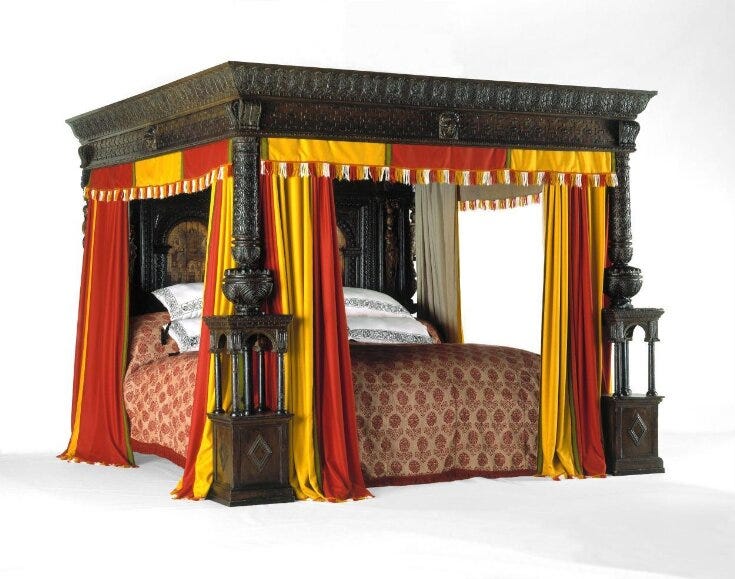#91 The design of sleep
Jetlag and a HUGE bed 🛌
Plump your pillows and get cosy for Design Lobster #92, where we’ll be gently exploring some sleep-related design. From an app that aims to eliminate jet lag to an enormous Elizabethan bed. Sweet dreams! 😴
✨Enjoying Design Lobster? Please share it with a friend, colleague or fellow designer.
Question: Can you eliminate jetlag with an app?

I’ve been reading a lot about sleep recently and came across The Jet Lag app by a company called Timeshifter – launched a couple of years ago with the aim of taking the sting out of travel across timezones. It does so by serving up a personalised sleep, light and caffeine schedule both before and after a long-haul flight.
The science behind this is fairly straightforward but not as well understood as it perhaps should be. Human circadian rhythms evolved under the consistent 24 hour pattern of sunrise and sunset, which means that the mere presence or absence of light stimulates hormones which make us alternately wakeful or sleepy. Rapid air travel however disrupts this natural cycle. To counter this, the app prescribes a staggered sleep schedule as well as defined hours of light and darkness, so that you gradually (rather than abruptly) transition from one timezone to another. From the sounds of things, it’s not always easy to stick to, but if you do, it really works.
I’m a big believer in waking using light rather than an alarm – I use a Casper Glow every morning. I’d love to see more examples of technology adapting to our inherent biological rhythms.
Design takeaway: Does your design take into account human biological rhythms?
🛰 This is how astronauts sleep on the ISS
Object: The Great Bed of Ware
We think of beds as something for just one or two people, but this 16th century example could reportedly sleep up to fifteen(!) Measuring 3.38m long and 3.26m wide, it was built from oak by Hertfordshire carpenter Jonas Fosbrooke in around 1590 – originally for the White Hart Inn in Ware, Hertfordshire.
It’s generally believed that its prodigious size was an advertising gimmick to attract visitors to the town following the drop in the number of Catholic pilgrims travelling via Ware to the Marian shrine in Walsingham, Norfolk. In any case it became very famous, mentioned in William Shakespeare’s Twelth Night and other plays of the period. And there was apparently no shortage of people willing to share their night in close proximity with strangers. Richly carved and painted, the bed also is coated with carved initials and the the wax seals of those who have slept there across the centuries. We talked in Design Lobster #56 about the 19th century invention of privacy and this bed is a powerful reminder the attitudes to personal space that existed before that.
Thanks for reader Sophie for first telling me about this bed! Any readers in London who fancy seeing the original can do so in the V&A Museum, where it’s been on display since the 1930’s.
Design takeaway: How would the characteristics of your design change if you scaled it up?
🛌 Explore the bed in detail in this video
Quote: “The future belongs to those who believe in the beauty of their dreams.”
– Eleanor Roosevelt
There was no way I could avoid using this famous quote given this week’s theme! Design is all about imagining new (and beautiful) futures and Eleanor’s quote reminds us how important it is to hold fast to our visions of what could be.
Whatever you do, keep dreaming,
Ben 🦞
Enjoyed this week’s Design Lobster? Let me know by clicking the heart button.
👇


